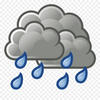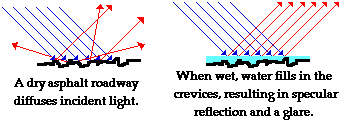 I am generally not a person who likes the rain, but as I sit with my coffee in hand looking out the window this morning I'm happy to see it. No doubt, so is the vegetation that depends on it. Not so for drivers though, social media has been full of well meant advice to slow down due to the potential of slippery roads.
I am generally not a person who likes the rain, but as I sit with my coffee in hand looking out the window this morning I'm happy to see it. No doubt, so is the vegetation that depends on it. Not so for drivers though, social media has been full of well meant advice to slow down due to the potential of slippery roads.
It struck me this morning that no one has thought to comment about driving in the rain at night.
Here on Vancouver Island it rains all winter. Many nights I found myself returning from Port Alberni to Parksville at the end of another patrol of Highway 4. The road around Cameron Lake is winding and to me it was like trying to drive inside of a sack of wet coal. Visual cues necessary to locate my vehicle on the pavement were either missing or difficult to see.
Oncoming traffic didn't seem to be affected by the reduction in the ability to see though. It was not uncommon to find drivers exceeding the speed limit although not by quite as much as they would on a dry, sunny day.
Yes, rain on pavement does reduce the available traction. It also fills in the rough surface and tends to reflect your (and everyone else's) headlights forward. Without light reflected back from the pavement you cannot see it as well. In addition, the extra light from oncoming vehicles creates unwanted glare, further reducing your ability to see.

The raindrops also function as a lens, scattering headlight illumination or even throwing it right back into your face. Glare is increased.
Wet surfaces distort light. This makes your windshield harder to see through and your headlights less effective.
When we can't see well, we tend to focus on the road directly in front of us. This means peripheral vision is reduced, possibly to the point of not seeing pedestrians at the roadside or vehicles approaching from the left or right at an intersection.
So, what should we do when driving at night in the rain? The simple and obvious answer is to slow down and increase your following distance.
In addition, the following will help:
- Keep your windows (inside & outside) and headlights clean
- Do not use high beams
- Replace wipers when they no longer clean the windshield completely
- Use a hydrophobic windshield treatment
- Don't use cruise control
- Keep both hands on the steering wheel
- Turn ALL your lights on
- Remember to keep your eyes moving, get the big picture
Water on the road is waiting to grab your tires and send you off in new directions. Beware of water contained in channelized pavement, pools of standing water and water running across your lane, especially at an angle. These could be virtually impossible to see at night.
You might not give it much thought, but driving at night in the rain can be a real challenge. Be prepared!
- Log in to post comments
